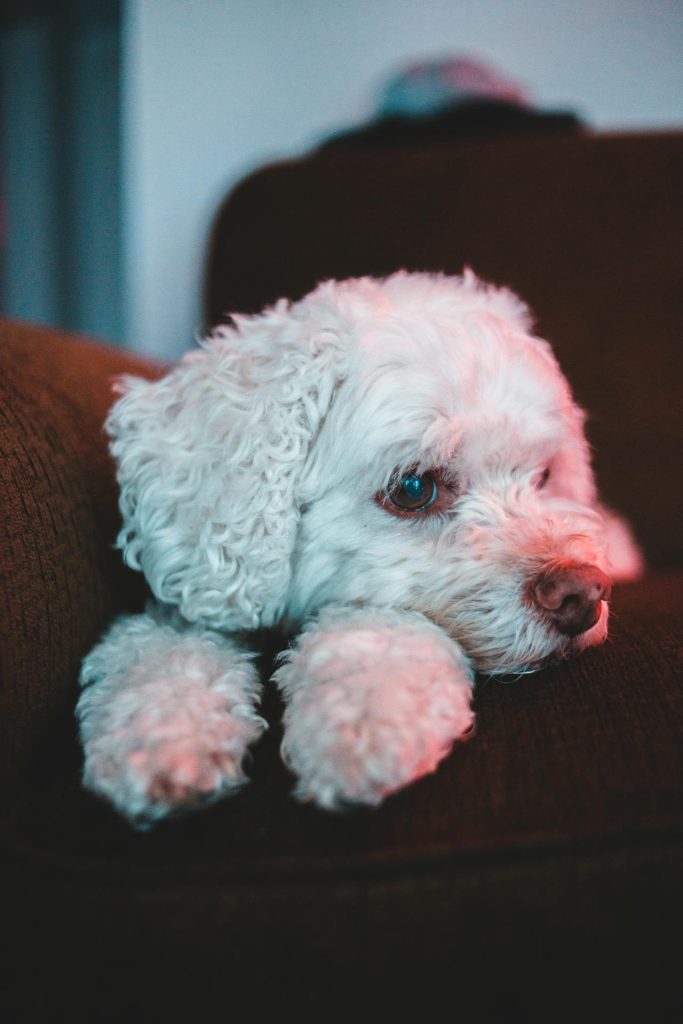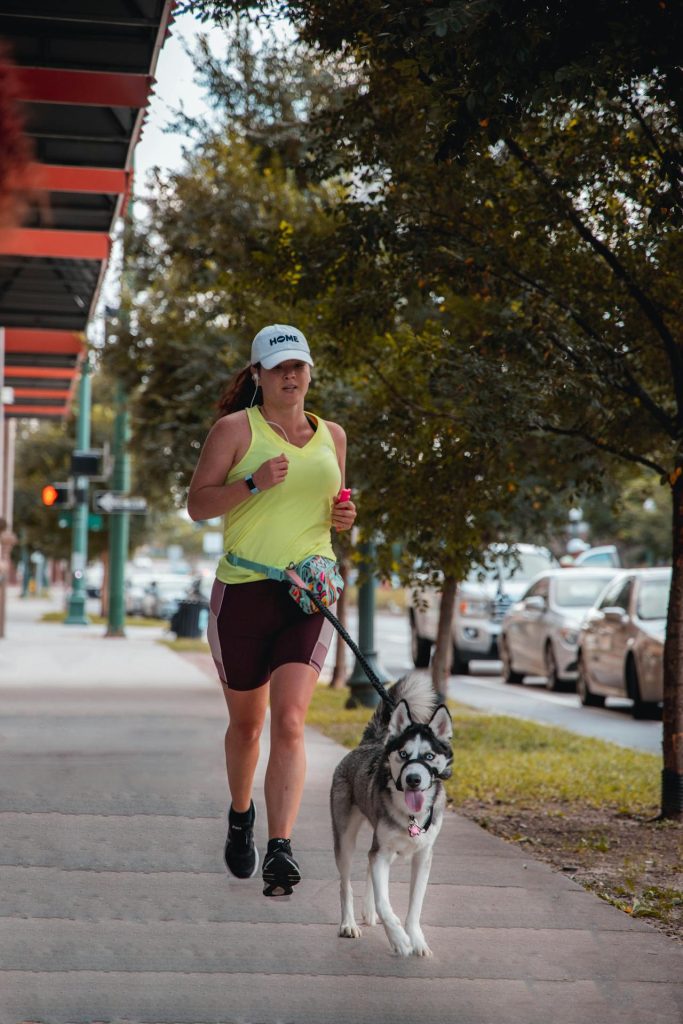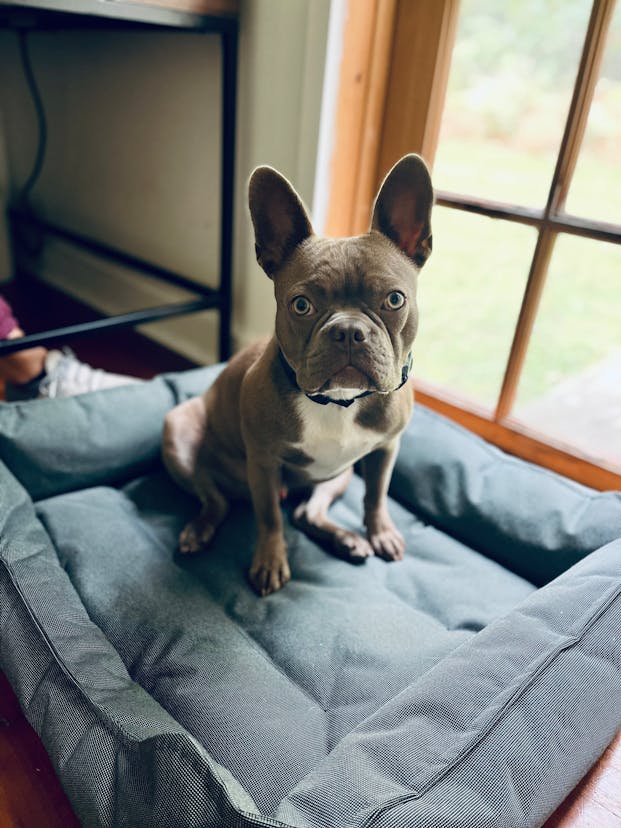
You can train your dog to sleep all night by establishing a consistent sleep schedule and creating a relaxing bedtime routine. Set a specific bedtime and wake-up time, and stick to it, even on weekends or when traveling. Develop a calming pre-sleep routine that includes gentle exercise, dim lighting, and soothing massages to signal to your dog that it’s time to wind down. By doing so, you’ll help regulate your dog’s internal clock and improve the quality of their sleep. As you explore further, you’ll discover additional strategies to help your dog sleep soundly through the night.
Table of Contents
Key Takeaways
- Establish a consistent sleep schedule to regulate your dog’s internal clock and improve sleep quality.
- Create a relaxing bedtime routine with calming activities, such as gentle exercise and soothing massages, to signal sleep time.
- Provide a comfortable sleeping environment, free from distractions, with a quiet and cozy spot for your dog to rest.
- Train your dog to self-soothe by offering familiar objects and encouraging calming behaviors, reducing anxiety and stress.
Establish a Consistent Sleep Schedule
By setting a consistent sleep schedule for your dog, you’ll help regulate their internal clock and improve the quality of their nighttime sleep.
Dogs, like humans, thrive on routine, and establishing a regular sleep schedule helps signal to them when it’s time to sleep and when it’s time to be awake.
To establish a consistent sleep schedule, set a specific bedtime and wake-up time for your dog, and stick to it, even on weekends or days off.
As you establish this schedule, also consider the sleep environment you’re creating for your dog.
This post contains affiliate links. However all the information provided on this site are my own honest opinions. See more in Disclaimer.
Verify they’ve a quiet, comfortable place to sleep, free from distractions and interruptions.
Consistency is key here, too – if your dog is used to sleeping in a crate, for example, try to maintain that same environment even when traveling.
By pairing a consistent sleep schedule with a sleep-conducive environment and clear bedtime cues, such as turning off lights or giving a calming command, you’ll help your dog learn to self-regulate their sleep and wakefulness, leading to better rest for both of you.
Create a Relaxing Bedtime Routine

Creating a relaxing bedtime routine is essential in training your dog to sleep through the night.
You can achieve this by implementing a calming pre-sleep routine that includes gentle exercise, a soothing atmosphere, and physical relaxation techniques.
Soothe With Gentle Exercise
What can you do to signal to your dog that it’s time to unwind and prepare for a restful night’s sleep? One effective way is to incorporate gentle exercise into your dog’s evening routine.
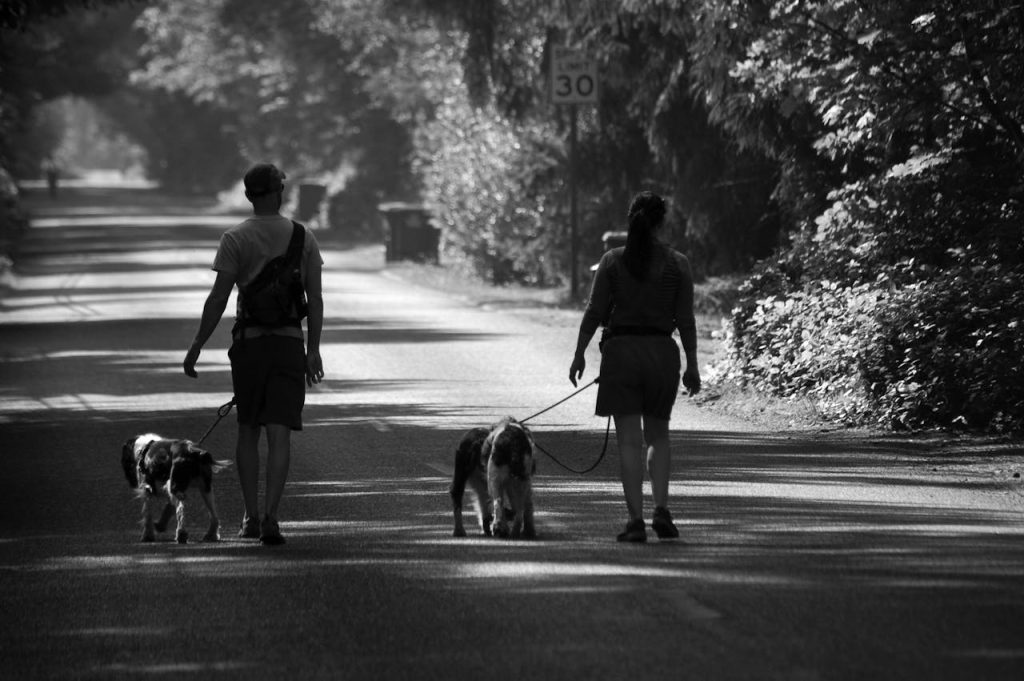
Gentle walks, in particular, can be an excellent way to calm your dog’s mind and body. By taking a short, leisurely stroll around the block, you can help your dog expend any pent-up energy and relax their muscles.
In addition to gentle walks, you can also try other calming activities, such as light play or gentle petting. These activities can help slow down your dog’s heart rate and calm their nervous system, making it easier for them to drift off to sleep.
Remember to keep the activities low-key and relaxing, avoiding anything that might stimulate or excite your dog. By making gentle exercise a regular part of your dog’s bedtime routine, you can help them develop a consistent sleep schedule and improve the quality of their sleep.
This, in turn, can have a positive impact on their overall health and well-being.
Dim the Evening Lights
Dimming the evening lights can signal to your dog that the day is winding down and it’s time to prepare for bed, much like it does for humans.

By creating a relaxing bedtime routine, you can help your dog learn to self-soothe and prepare for a good night’s sleep.
One way to achieve this is by using soft lighting to create a calming evening ambiance.
Here are some tips to help you create a sleep-conducive environment:
- Use table lamps or floor lamps with soft shades to create a warm, cozy glow.
- Replace harsh overhead lighting with string lights or fairy lights to create a calming atmosphere.
- Dim or turn off screens (such as TVs, computers, and smartphones) at least an hour before bedtime to reduce blue light exposure.
Calm Pre-Sleep Massage
As you establish a sleep-conducive environment, you can further help your dog unwind with a calming pre-sleep massage, which can become a soothing part of their bedtime routine.
By incorporating this technique, you’ll not only help your dog relax but also strengthen your bond with them.
To start, gently place your fingers on your dog’s fur, working from head to tail. Use long, flowing strokes to massage their coat, paying special attention to areas that tend to hold tension, such as the neck and shoulders.
As you massage, focus on calming techniques like deep breathing and gentle touch.
The physical contact will help slow your dog’s heart rate and promote relaxation. The massage benefits extend beyond physical relaxation, too – it can also help calm your dog’s mind and reduce stress.
Regular pre-sleep massages can lead to improved sleep quality and duration for your dog.
Train Your Dog to Self-Soothe
By teaching your dog to self-soothe, you’ll help them learn to relax and calm down independently, making it easier for them to settle in for a restful night’s sleep.
This is especially important for dogs that suffer from anxiety-related issues. Self-soothing techniques can help reduce your dog’s stress levels and promote relaxation.
To train your dog to self-soothe, try the following:
- Give your dog a quiet space to relax, free from distractions and interruptions.
- Provide a familiar object, such as a favorite toy or blanket, to offer comfort and reassurance.
- Encourage your dog to engage in calming behaviors, such as slow breathing, licking, or chewing.
Limit Attention Before Bedtime
To help your dog sleep through the night, you need to limit the attention you give them before bedtime.
Reducing evening playtime is essential, as it stimulates their mind and body, making it harder for them to wind down.
Reducing Evening Playtime
Limiting attention and playtime with your dog in the hours leading up to bedtime is essential for signaling that it’s time to wind down.

By doing so, you’ll help your dog relax and prepare for a good night’s sleep. Evening activities can actually interfere with your dog’s ability to settle down, making it harder for them to fall asleep.
To reduce evening playtime, try these playtime alternatives:
- Replace high-energy activities with calming ones, such as gentle petting or soothing massages.
- Engage your dog in quiet games, like hiding treats or puzzle toys.
- Take a relaxing walk around the block, avoiding any stimulating environments.
Calming Pre-Sleep Routine
Establishing a calming pre-sleep routine is an essential step in signaling to your dog that it’s time to settle in for the night. It starts with restricting attention in the 30 minutes to an hour before bedtime.
Trending in Dogs:
During this time, avoid interacting with your dog in energetic or stimulating ways, such as playing fetch or tug-of-war. Instead, opt for relaxing activities that promote calmness, like gentle petting or soft speaking.
You can also explore aromatherapy benefits, such as using essential oils like lavender or chamomile, to create a soothing atmosphere.
Playing bedtime music, like calming classical tunes or nature sounds, can also help your dog unwind.
As the night winds down, make sure to dim the lights and maintain a quiet environment, signaling to your dog that it’s time for sleep.
Choose the Right Sleeping Place
Selecting the ideal sleeping spot for your dog is essential for promoting a restful night’s sleep for both you and your pet.
When choosing the right sleeping place for your dog, you need to take into account a few key factors to guarantee your pet feels comfortable and secure.
You want to provide your dog with a quiet environment, away from noisy areas of the house and outside distractions.
The sleeping spot should also be close to you, as dogs are pack animals and prefer to be near their owners. Additionally, you’ll need to choose ideal bedding for your dog, such as a supportive mattress or orthopedic bed.
Some things to take into account when choosing your dog’s sleeping spot include:
- Providing a familiar sleeping environment, such as a crate or favorite blanket
- Keeping the sleeping area at a comfortable temperature
- Guaranteeing the sleeping spot is dark or dimly lit
Get Your Dog Enough Exercise
Once you’ve set up a comfortable sleeping spot for your dog, it’s time to focus on another key factor that affects their nighttime rest: ensuring they’re getting enough physical and mental stimulation during the day.
Dogs need to expend their energy through exercise and engaging activities to promote a restful night’s sleep.
You can achieve this by incorporating outdoor activities into their daily routine, such as walks, jogs, or playtime in the park.
The fresh air and physical exertion will help tire them out.
In addition to physical exercise, mental stimulation is also essential for a dog’s overall well-being and sleep quality.
Engage your dog’s mind with puzzle toys, obedience training, or scent games.
These activities challenge their problem-solving skills and keep them focused, reducing stress and anxiety that can disrupt sleep.
Manage Nighttime Potty Breaks
To prevent accidents and minimize disruptions, you need to develop a strategy for managing your dog’s nighttime potty breaks.
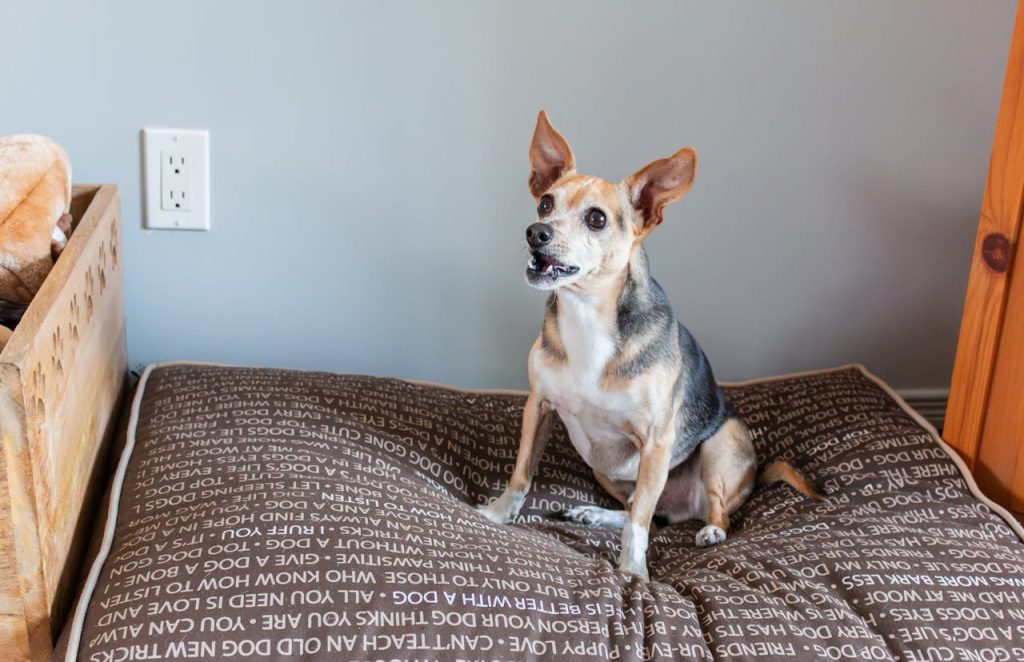
This is essential in training your dog to sleep all night, especially if you have a young puppy or an older dog with limited bladder control.
When creating a nighttime potty break plan, consider the following factors:
- *Breed considerations*: Some breeds, such as Bulldogs and Pugs, have smaller bladders and may need more frequent potty breaks.
- *Age and size*: Puppies and small dogs may not be able to hold their bladder for long periods, while larger dogs may need less frequent breaks.
- *Individual needs*: Observe your dog’s potty habits and adjust your plan accordingly.
Frequently Asked Questions
“Are you tempted to use sleep-inducing treats? While they may help, you should establish consistent nighttime routines to signal sleep time. Instead of relying on treats, you’ll be teaching your dog to self-soothe and sleep through the night.”
You’re likely puzzling over your dog’s contradictory sleep patterns, but it’s not uncommon. Your dog sleep patterns might be influenced by nighttime anxiety, causing them to be more alert and awake at night, unlike their sleepy daytime demeanor.
Letting your dog sleep in your bed can have benefits, such as increased bonding and comfort, but it’s crucial to take into account sleep hygiene practices to guarantee a good night’s sleep for both you and your pet.
You’ll notice that certain breeds of dogs exhibit better sleeping habits than others. Research suggests breed differences play a significant role, with some breeds naturally being more inclined to sleep through the night without disruptions.
You’ll find that crate training helps your dog sleep through the night by establishing a consistent nighttime routine and creating crate comfort, which calms and reassures them, leading to a restful night’s sleep for both you and your dog.
Conclusion

You’ve navigated the winding path to a restful night’s sleep with your dog by your side.
By establishing a consistent sleep schedule, creating a calming pre-sleep routine, and teaching your dog to self-soothe, you’ve built a sturdy bridge to a full night’s rest.
As the stars align and the moon rises, your dog will snuggle into their cozy bed, and you’ll both drift off to dreamland, the night air filled with the soothing sounds of peaceful slumber.









